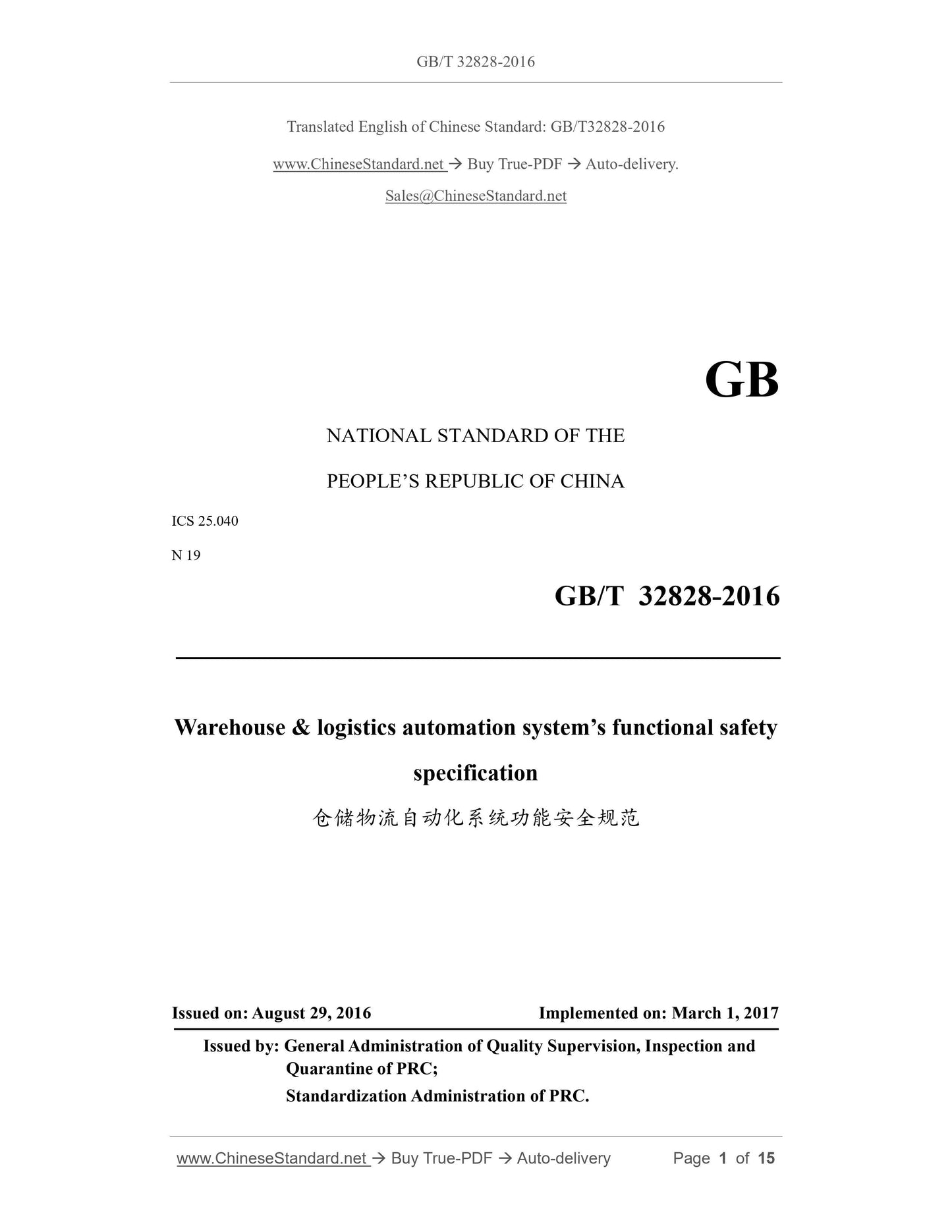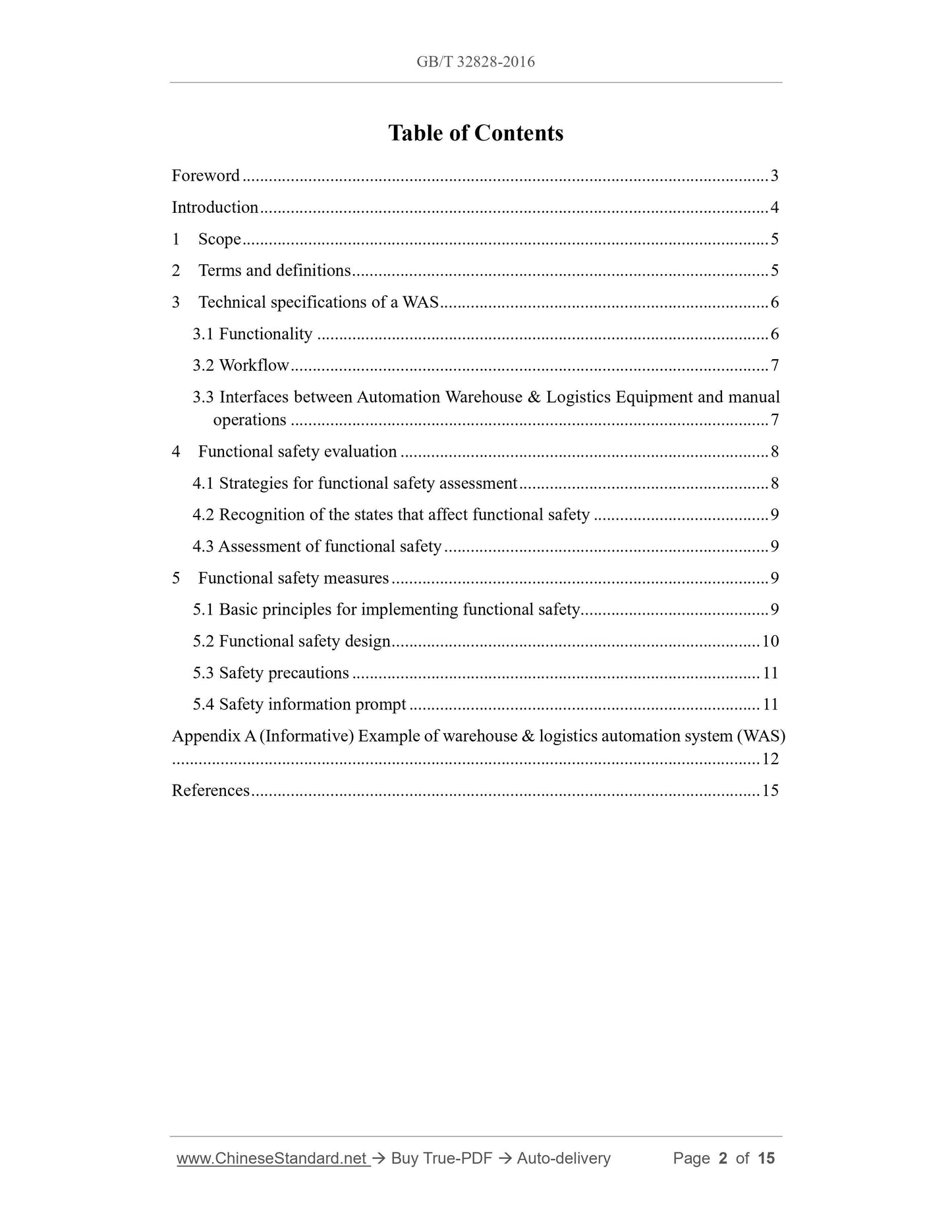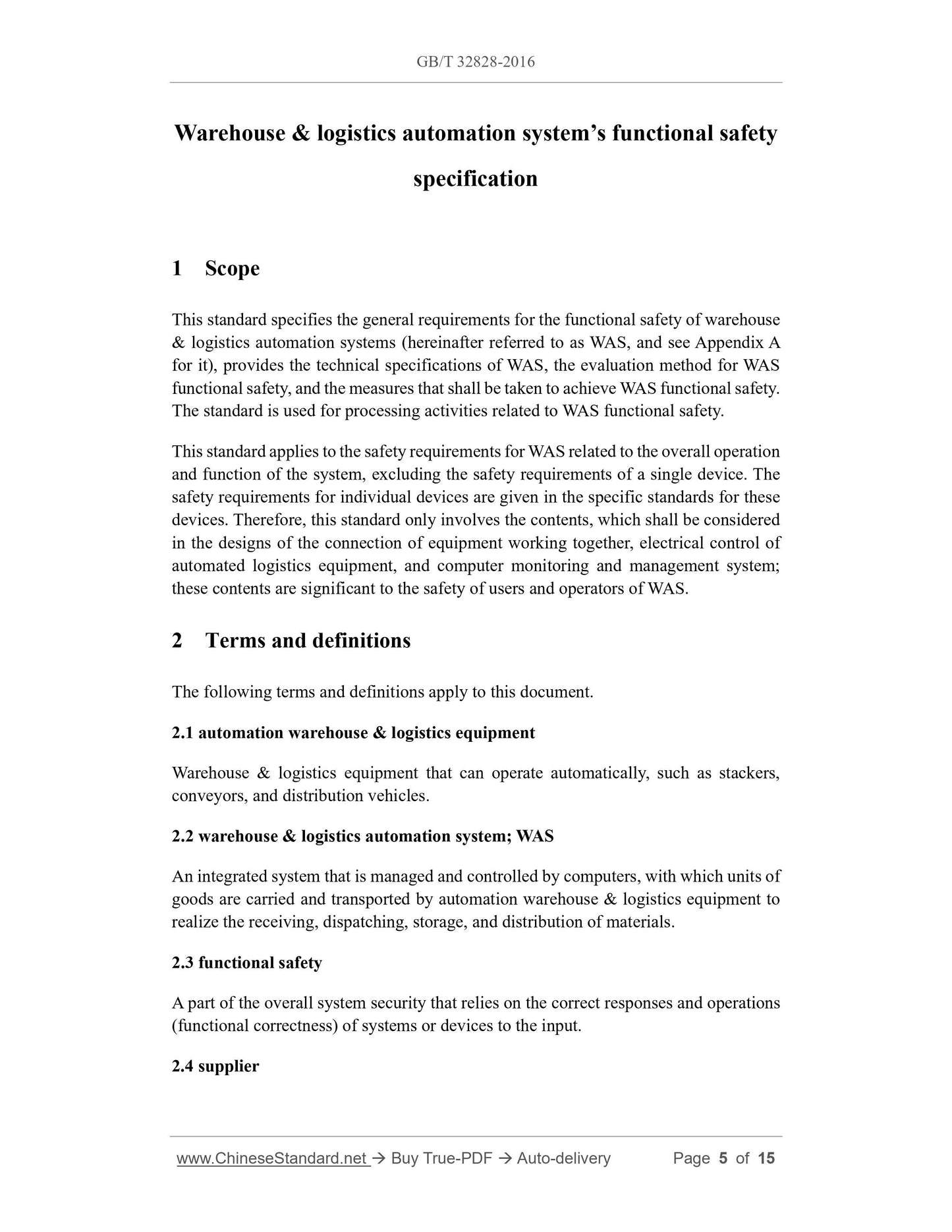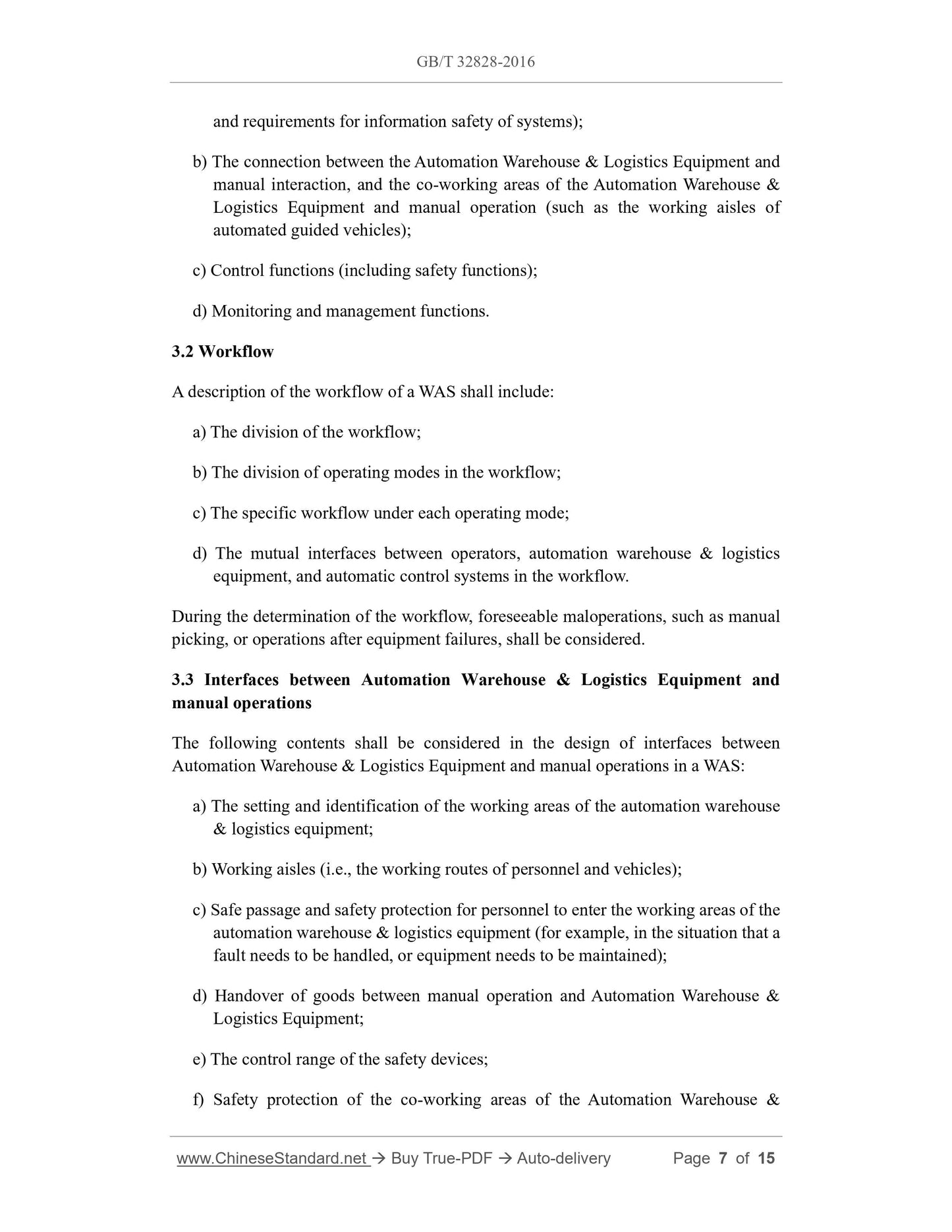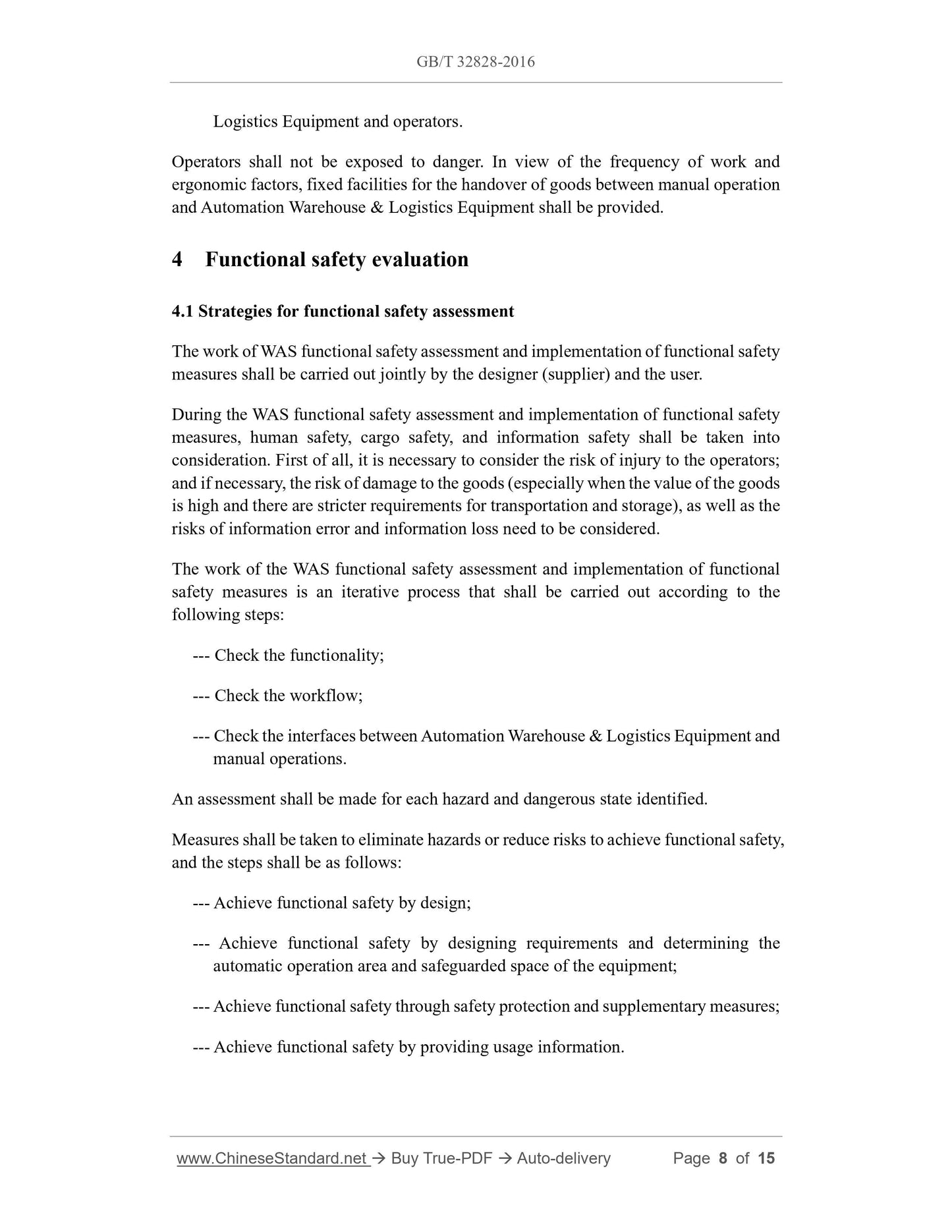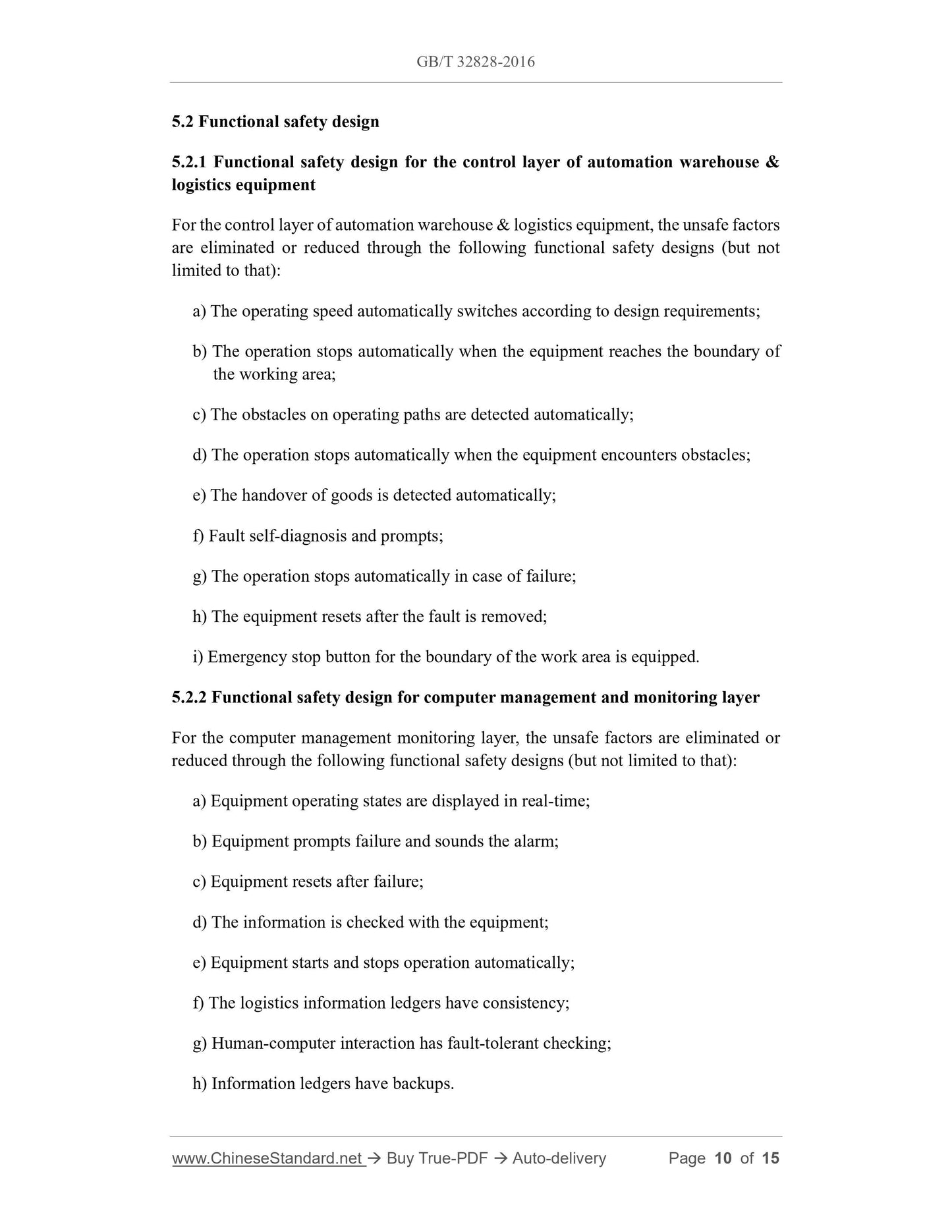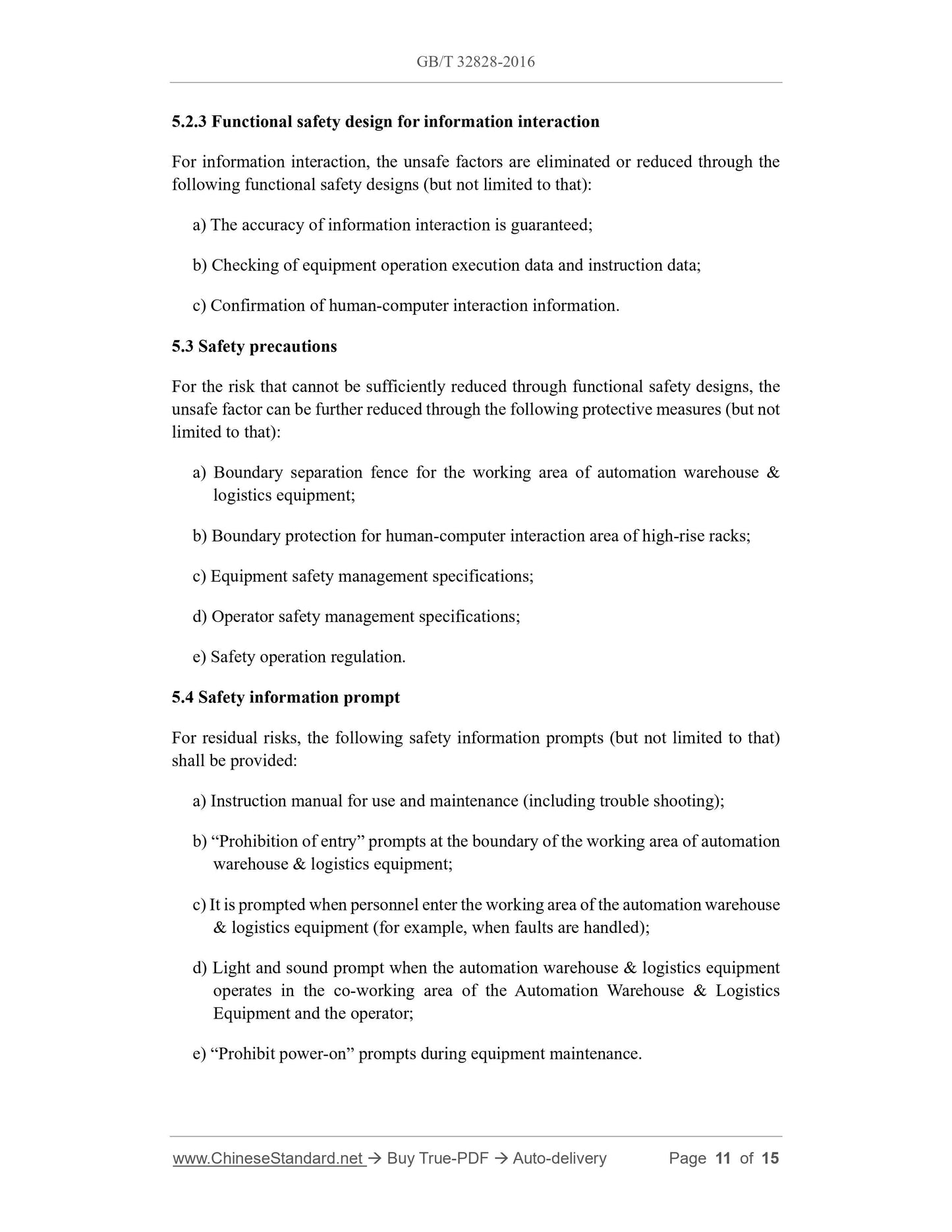1
/
of
7
www.ChineseStandard.us -- Field Test Asia Pte. Ltd.
GB/T 32828-2016 English PDF (GB/T32828-2016)
GB/T 32828-2016 English PDF (GB/T32828-2016)
Regular price
$230.00
Regular price
Sale price
$230.00
Unit price
/
per
Shipping calculated at checkout.
Couldn't load pickup availability
GB/T 32828-2016: Warehouse and logistics automation system���s functional safety specificati
Delivery: 9 seconds. Download (and Email) true-PDF + Invoice.Get Quotation: Click GB/T 32828-2016 (Self-service in 1-minute)
Newer / historical versions: GB/T 32828-2016
Preview True-PDF
Scope
This standard specifies the general requirements for the functional safety of warehouseand logistics automation systems (hereinafter referred to as WAS, and see Appendix A
for it), provides the technical specifications of WAS, the evaluation method for WAS
functional safety, and the measures that shall be taken to achieve WAS functional safety.
The standard is used for processing activities related to WAS functional safety.
This standard applies to the safety requirements for WAS related to the overall operation
and function of the system, excluding the safety requirements of a single device. The
safety requirements for individual devices are given in the specific standards for these
devices. Therefore, this standard only involves the contents, which shall be considered
in the designs of the connection of equipment working together, electrical control of
automated logistics equipment, and computer monitoring and management system;
these contents are significant to the safety of users and operators of WAS.
Basic Data
| Standard ID | GB/T 32828-2016 (GB/T32828-2016) |
| Description (Translated English) | Warehouse and logistics automation system???s functional safety specificati |
| Sector / Industry | National Standard (Recommended) |
| Classification of Chinese Standard | N19 |
| Classification of International Standard | 25.040 |
| Word Count Estimation | 14,129 |
| Date of Issue | 2016-08-29 |
| Date of Implementation | 2017-03-01 |
| Regulation (derived from) | National Standard Announcement 2016 No.14 |
| Issuing agency(ies) | General Administration of Quality Supervision, Inspection and Quarantine of the People's Republic of China, Standardization Administration of the People's Republic of China |
Share
